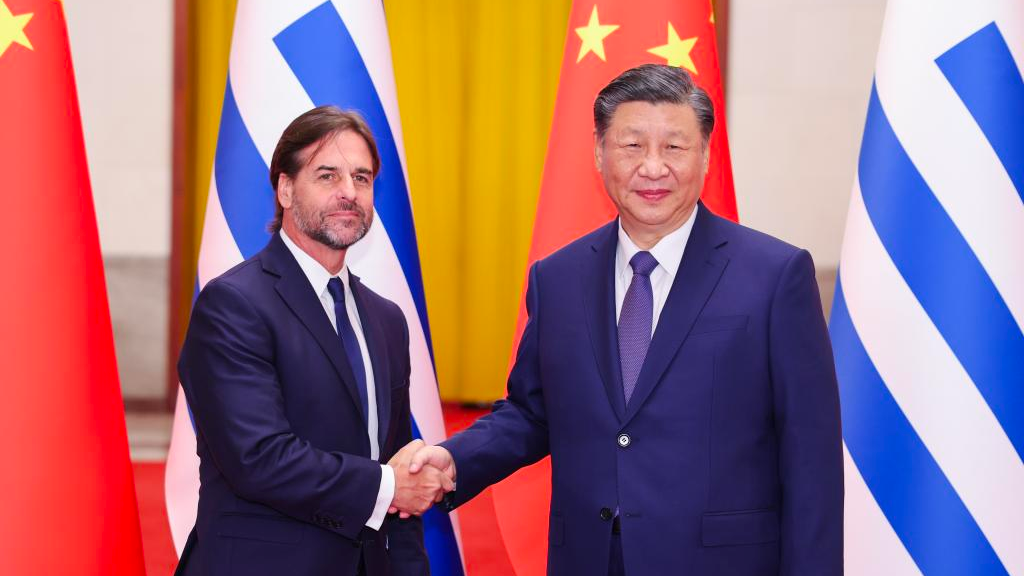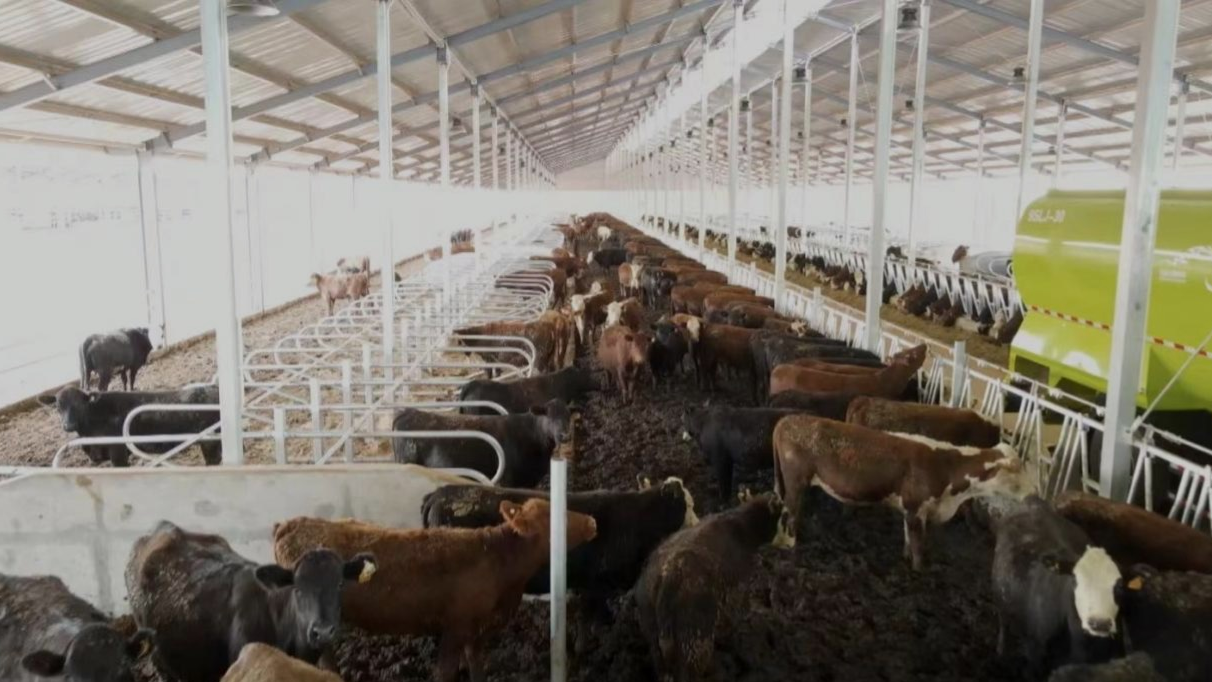
Chinese President Xi Jinping holds a welcoming ceremony for Uruguayan President Luis Alberto Lacalle Pou in the Northern Hall of the Great Hall of the People prior to their talks in Beijing, capital of China, November 22, 2023. /Xinhua
Chinese President Xi Jinping holds a welcoming ceremony for Uruguayan President Luis Alberto Lacalle Pou in the Northern Hall of the Great Hall of the People prior to their talks in Beijing, capital of China, November 22, 2023. /Xinhua
Editor's note: Hafijur Rahman, a special commentator on current affairs for CGTN, is a columnist and security and strategic analyst, working in a prominent Strategic Studies Center in Bangladesh. The article reflects the author's opinions and not necessarily the views of CGTN.
In the ever-evolving landscape of international diplomacy and trade, the state visit of Uruguayan President Luis Alberto Lacalle Pou to China emerges as a crucial juncture. President Lacalle Pou's visit to China, which takes place from November 20 to 24 at Chinese President Xi Jinping's invitation, is more than routine diplomatic niceties.
At the heart of this diplomatic endeavor is the pursuit of strengthening economic and diplomatic bonds between the two nations, with each recognizing the shared benefits, mutual respect, and win-win cooperation as core adhesive aspects of their ever-expanding diplomatic ties.
According to the analyst, negotiating a free trade agreement (FTA) is a significant topic of discussion during the high-stakes meetings between President Lacalle Pou and President Xi. The formal talks on the deal were initiated last year following a consensus reached in 2016 between President Xi and his former Uruguayan counterpart, Tabare Vazquez. Last July, Montevideo and Beijing announced the completion of joint feasibility studies for an FTA.
Lacalle Pou's visit underscores Uruguay's strategic goal to cement its economic and diplomatic bonds with China, its largest trading partner. Amidst celebrating the 35th anniversary of China-Uruguay diplomatic ties, the Asian giant accounted for 28 percent of Uruguay's merchandise exports in 2022. According to China's General Administration of Customs (GAC), trade between the two countries in 2022 was $7.44 billion, an increase of 14.9 percent over the previous year. Last year, China bought $4.46 billion worth of goods from Uruguay, up 23 percent from the previous year.
Over the course of only 35 years, the bilateral ties have celebrated several watershed moments. Given the geographical distance, cultural differences, and contrasting governance systems between the two countries, such a level of mutual collaboration across multiple dimensions precisely epitomizes the very definition of a "symbiotic relationship."
Formally launched in 1988, the diplomatic ties were given a significant boost when the presidents of both countries opted to upgrade the diplomatic ties to a strategic partnership in 2016. There has been no turning back since then. Uruguay is the first Southern Common Market (Mercosur) member country to sign a memorandum of understanding (MoU) with China on cooperation under the framework of the Belt and Road Initiative (BRI).
Among the multiple driving forces at work, the complementary nature of the two economies has been playing a pivotal role in bringing the relations to such a unique height. These mutually beneficial economic and trade dynamics have solidified China's position as Uruguay's primary trading partner during the last 11 years, receiving around a third of Uruguay's total exports. Bilateral trade has increased 60 times since 35 years ago. Uruguayan exports to China primarily comprise agricultural produce, such as meat, soybean, and wool. The South American country is China's third-largest supplier of beef and China's fourth-largest supplier of soybeans.

The cattle imported from Uruguay at a farm in Xundian County, southwest China's Yunnan Province, July 20, 2021. /CGTN
The cattle imported from Uruguay at a farm in Xundian County, southwest China's Yunnan Province, July 20, 2021. /CGTN
Like other Mercosur nations, Uruguay has comparative agricultural advantages. According to the Food and Agriculture Organization (FAO), Uruguay's agriculture industry provides roughly 8 percent of its GDP, and, when all associated activities are included, contributes up to 25 percent of its total GDP. The exports of agricultural products account for 71 percent of total exports of goods, supplying key products for the population's basic food needs and generating a significant export surplus. The export economy of Uruguay relies heavily on agricultural products, and there is a vast market for them in China.
Meanwhile, the Chinese agricultural import market presents a significant opportunity for Uruguay because of the country's rapid economic expansion and solid post-pandemic economic recovery, both of which have boosted consumption and industrial activity. The 19-day visit to China by Uruguay's Minister of Livestock, Agriculture, and Fisheries Fernando Mattos earlier in May 2023 highlighted the importance of bilateral agricultural cooperation, with both countries signing several agreements between their agricultural ministries as well as other related institutions.
On the other hand, thanks to the Chinese government's efforts to modernize the agriculture sector and the robust research and development (R&D) expenditure in promoting innovation for agricultural equipment and logistics solutions, the sector has experienced a startling expansion in hi-tech agricultural projects and enterprises. By 2022, China has risen to the forefront of agricultural science and technology innovation, with agricultural technology contributing 62.4 percent to overall farm production.
China and Uruguay's mutually beneficial trading partnership is a prime example of how each country may benefit from the other's unique set of skills and resources. Uruguay's abundant agricultural resources have found a solid market in China, while simultaneously, Uruguay has shown to be an eager market for Chinese agricultural technological products. Both countries benefit from the increased economic linkages and the more collaborative atmosphere this two-way interchange fosters.
(If you want to contribute and have specific expertise, please contact us at opinions@cgtn.com. Follow @thouse_opinions on Twitter to discover the latest commentaries in the CGTN Opinion Section.)



